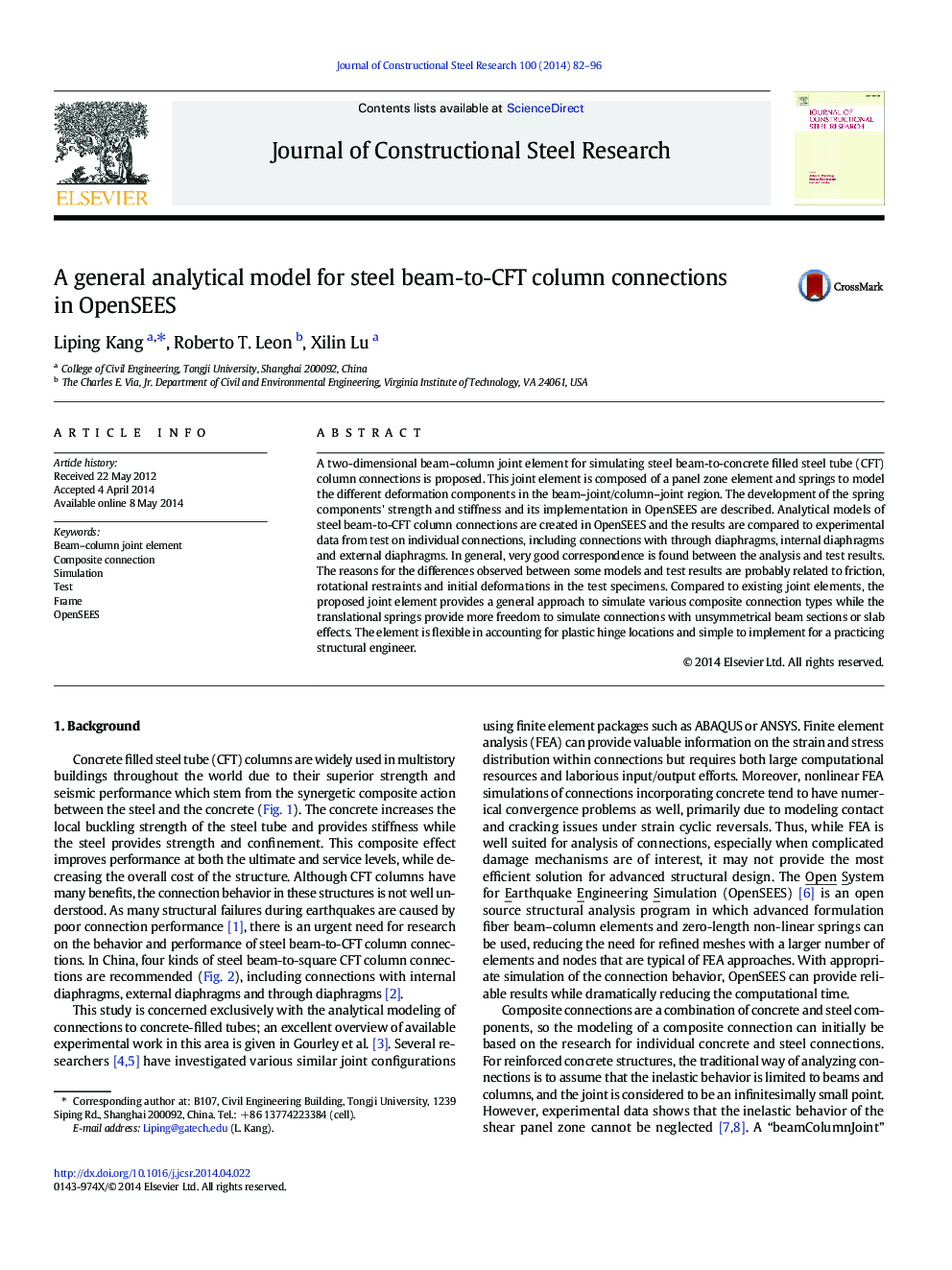| Article ID | Journal | Published Year | Pages | File Type |
|---|---|---|---|---|
| 284686 | Journal of Constructional Steel Research | 2014 | 15 Pages |
•We proposed a general joint element for composite connections.•It can simulate unsymmetrical joint behavior and specific plastic hinge location.•Spring stiffness in the joint element is easy to calculate.•The proposed model gives good simulation of various composite connection types.
A two-dimensional beam–column joint element for simulating steel beam-to-concrete filled steel tube (CFT) column connections is proposed. This joint element is composed of a panel zone element and springs to model the different deformation components in the beam–joint/column–joint region. The development of the spring components' strength and stiffness and its implementation in OpenSEES are described. Analytical models of steel beam-to-CFT column connections are created in OpenSEES and the results are compared to experimental data from test on individual connections, including connections with through diaphragms, internal diaphragms and external diaphragms. In general, very good correspondence is found between the analysis and test results. The reasons for the differences observed between some models and test results are probably related to friction, rotational restraints and initial deformations in the test specimens. Compared to existing joint elements, the proposed joint element provides a general approach to simulate various composite connection types while the translational springs provide more freedom to simulate connections with unsymmetrical beam sections or slab effects. The element is flexible in accounting for plastic hinge locations and simple to implement for a practicing structural engineer.
